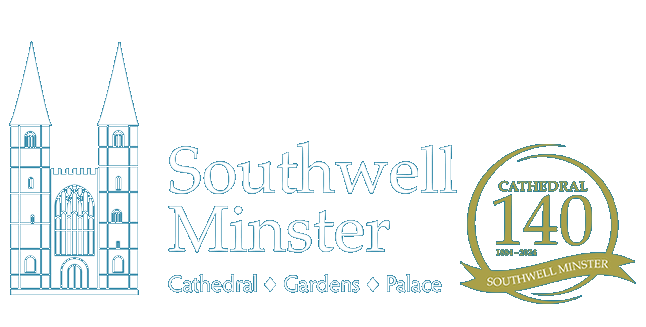History of the Bells
There is evidence of bells at Southwell Minster before the Norman Conquest when in the middle of the eleventh century Archbishop Kinsius gave two to the Saxon church – half a century before the present building was begun – but whether or not these were moved at the time of rebuilding is not known.
The next mention of bells occurs in the 15th century. Whilst carrying out research in the 1980s, the then Minster Librarian revealed that in 1430 repairs had been carried out on a number eight bell, therefore it is possible that at least eight bells existed in the tower at that time. Also in 1475 it is recorded that several complaints were received about the priests not arriving in the Quire, for divine service, until after the bells had finished ringing. The first time a set number of bells are mentioned is in 1535, when an instruction was left in a Will for three peals of five bells to be rung at the time of a death.
In 1693 a set of chimes was given to the Minster by Thomas Wymondesold of Lambeth and a sum of £1.00 per annum thereafter for their upkeep. There is a plaque on the wall of the North Quire aisle to this effect. The £1 was from the rent of a field in Southwell known as Chimes Meadow. In recent times, this was sold and is now part of a modern housing estate - but the fund for the maintenance of the chimes still exists.
During a thunderstorm on November 5th, 1711, lightning struck the south-west “pepperpot” tower and started a fire which quickly spread to the central tower; it is recorded that the eight bells melted and crashed to the Minster floor. This is the first time we have a true record of the number of the bells in the tower.
On 1st May 1712, Thomas Clay of Leicester signed an agreement with the Minster Chapter to recast the melted bells and place them back in the tower. Evidently the bells were not satisfactory because the inhabitants of Southwell contributed a sum of money for a new ring to be cast. In 1721, Abraham Rudhall, a famous bell-founder from Gloucester, was granted the contract to cast this new ring of eight bells, with a total weight of about 5 ½ tons at a cost of £170. These were hung in an anticlockwise wooden frame, the tenor bell weighing approximately 28 cwt. There is no known reason why they should have been hung in this fashion as bells are normally hung in a clockwise circle.
In 1819, the 4th and 5th bells were recast by Thomas Mears of London and in 1849 the 2nd bell was also recast by C & G Mears of the same foundry. In 1897 two new treble bells were given to the Minster to enable the National Anthem to be played on the 1693 set of chimes, the chiming machine having been rebuilt after the fire. The new bells were cast by John Taylor of Loughborough, but were not hung for ringing at that time. They are now part of the present ring. Over the years the Rudhall bells gave good service and were noted for their fine tone, but in 1961 big changes were brought about when a generous donation was given to the Minster for the bells to be augmented to a ring of twelve and for a new ringing chamber floor to be constructed. Again the casting of the new bells was carried out by Taylors with the old bells being recast, with the exception of those added in 1897. These were retuned and included in the new ring as numbers five and seven.
Today, the number of bells in the tower is thirteen, a ring of twelve, with a semitone flat sixth to give a light ring of eight, the 9th bell becoming the tenor. Taylors wanted to hang the bells in a complete new steel frame, but permission was refused, so eight of the bells had to go back into the old Rudhall frame with only the four lighter ones and the flat sixth in a steel one. The tenor is a little lighter than the old one, being 25 cwt.
The old bells, until 1961, were rung from a gallery with the centre open to the Minster; it came out from the sides of the tower in approximately the same position as the present ringing chamber and, when ringing, the ringers could see to the crossing floor below. This was most unusual as the only other open ringing gallery in the country is now in Merton College chapel, Oxford.
We are grateful to John Meredith (former Captain of Ringers and Head Verger) for writing this page.
